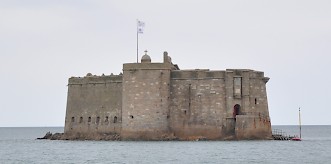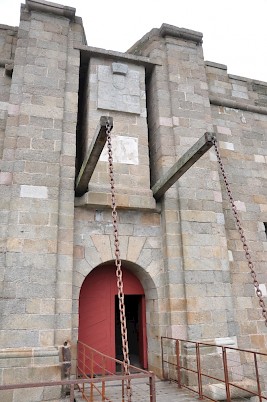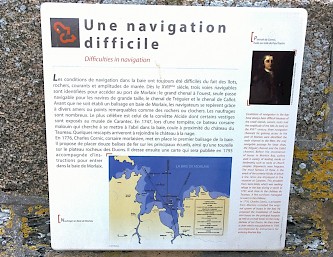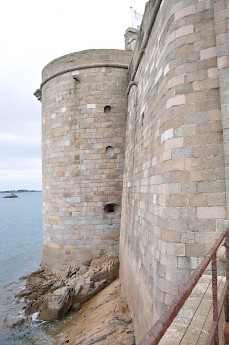Château du Taureau
Over the weekend, my girlfriend Emma and I went for a weekend excursion to Brittany, staying in the quaint and historic town of Morlaix. With a choppy overnight sea crossing, we arrived a little worse for wear getting off the local train from Roscoff. We spent the Saturday looking around the town and viaduct. The place has a long history with a number of historic ‘lantern’ houses, although not much exists of the medieval defences today. Notably, it was raided by the English in 1342 (the Battle of Morlaix) and again in 1522, which led to the sacking of the town and the second battle of Morlaix. The Mary Rose was one of the 60 ships which took part in the latter raid. A fort was then built in the Bay of Morlaix to protect the town.

The approach by sea to Morlaix is treacherous, navigating through reefs and an archipelago of tiny islands. All deep water ships would have to pass within a few hundred feet of the Isle de Taureau to enter Morlaix, so this was the ideal site to build on and to protect the harbour. The original fortification was improved by Sebastien Vauban, who started the fort we see today. It was designed to hold eleven heavy guns (to shoot at a ship’s hull as it passed the fortress) and several light cannons to damage rigging. The fort was refurbised in the last decade to safely allow visitors - now this was one we simply couldn’t miss!

Our first issue was getting from Mortlaix to Carantec for the boat journey. We went on a Sunday in the off-season, which meant no local buses were running! The second issue was that tickets have to be booked. This can be done online, by phone (if you speak reasonable French) or by buying them from the small kiosk on the Plage de Kelenn (which is well signposted if you are going by car). Despite it being a quiet weekend day (the beaches were deserted), there were some 60 people just on our trip, so booking is advisable.

The journey by boat from Carantec took 10 minutes and we soon docked with the fort’s jetty. The guides then gave a talk (in French) on the history of the fort. Thankfully the guidebook and the numerous information boards had some English. I have to admit my French is quite basic, but I still gleaned a lot of information from the boards and book.

While initially used as a gun battery, the island soon became used as a prison - real ‘Count of Monte Cristo’ stuff! Only those who could afford imprisonment were kept here - the families paying for their confinement. Their crimes were minor (by today’s standards) such as knavery and critisising a rise in taxes. One was imprisoned for lack of respect to his mother! Political prisoners were also kept here, however, including one of Les Communards (no, not the band!). If a crime was serious enough, a prisoner would simply have been executed - imprisonment was only considered where it would be appropriate or politically inconvenient to pass a harsh sentence. The Chateau fell into disuse in the latter part of the 19th century, becoming a National monument in 1914. It was breifly used as a flak tower by the Germans in World War 2 and was a sailing school in the 1960s.

I would recommend Chateau du Taureau to anyone visiting the area. It has been restored to its original state and you can access most areas. It is a Vauban built fortress and improvised prison with fantastic views of the Bay of Morlaix, what else could you ask for?




